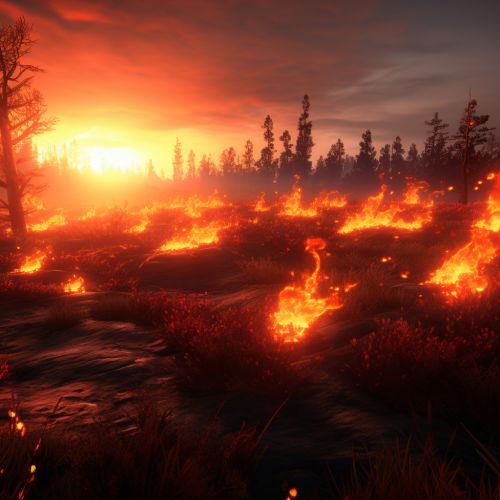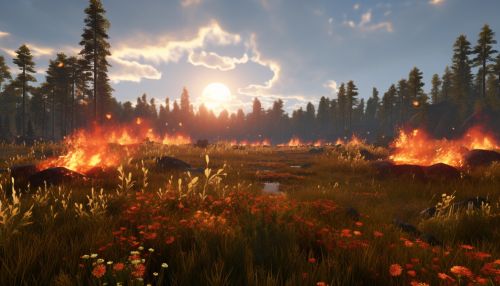FARSITE Fire Area Simulator
Overview
The FARSITE Fire Area Simulator is a fire behavior and growth simulator developed by the United States Forest Service. It is a system that uses spatial information on topography and fuels along with weather and wind files. It utilizes mathematical models to simulate potential fire behavior characteristics, including rate of spread, flame length, fireline intensity, and other variables over a defined landscape.
Development and Features
FARSITE was developed in the mid-1990s by Mark Finney, a research forester at the US Forest Service's Fire Sciences Laboratory in Missoula, Montana. The system was designed to provide fire managers with a tool to aid in the decision-making process during wildfire events. It was initially intended for use in project-level planning and fuel treatment analysis, but its use has expanded to include real-time wildfire management and long-term planning.


FARSITE incorporates several fire behavior models, including the Rothermel surface fire spread model, the Van Wagner crown fire initiation and spread model, and the Albini spotting model. These models allow the system to simulate various aspects of fire behavior, including surface fire, crown fire, and fire spotting. The simulator also includes a weather model that can account for changes in weather conditions over time.
The system uses spatial data on topography, fuels, and weather to simulate fire growth and behavior. This data is input into the system in the form of raster maps, which are grids of cells that each contain a value representing a specific attribute of the landscape, such as elevation or fuel type. The system then uses these maps to calculate fire behavior and growth across the landscape.
Applications
FARSITE has been used in a variety of applications, from real-time wildfire management to long-term planning and research. In real-time wildfire management, the system can be used to predict the potential spread and behavior of a wildfire, aiding in the decision-making process for fire managers. This can help in determining where to allocate resources, when to implement evacuations, and how to best contain the fire.
In long-term planning and research, FARSITE can be used to analyze the potential impacts of different fuel treatment strategies, such as prescribed burning or mechanical thinning. By simulating fire behavior under different treatment scenarios, the system can help in evaluating the effectiveness of these strategies in reducing wildfire risk.
FARSITE is also used in fire behavior training courses, where it can provide a realistic simulation of fire behavior for training purposes. This can help in improving understanding of fire behavior and in developing skills in predicting fire behavior and making fire management decisions.
Limitations and Criticisms
While FARSITE is a powerful tool for simulating fire behavior, it is not without its limitations. One of the main criticisms of the system is that it relies on mathematical models that are based on certain assumptions and simplifications of fire behavior. These models may not accurately represent all aspects of fire behavior, particularly in complex landscapes or under extreme weather conditions.
Another limitation of FARSITE is that it requires detailed spatial data on topography, fuels, and weather. Collecting and preparing this data can be time-consuming and resource-intensive, and the accuracy of the simulation results is highly dependent on the quality of this data.
Furthermore, while FARSITE can simulate the potential spread and behavior of a wildfire, it cannot predict the exact behavior of a specific fire. Fire behavior is influenced by a multitude of factors, many of which are unpredictable or difficult to measure. Therefore, while FARSITE can provide useful predictions of potential fire behavior, these predictions should be used with caution and supplemented with other information and expertise.
